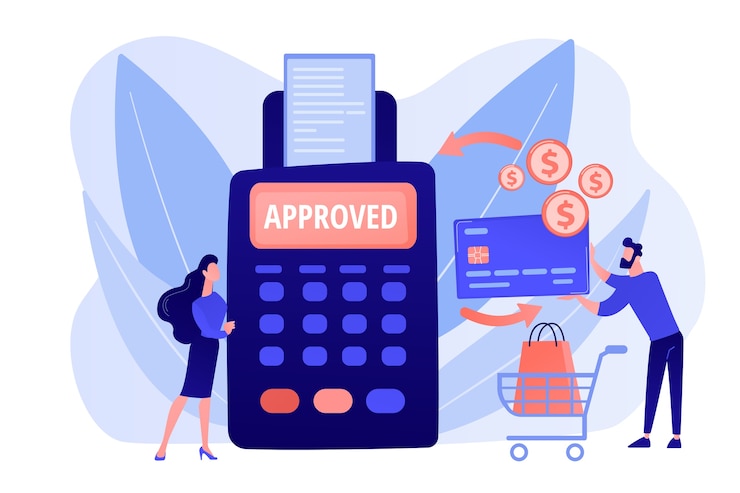
A factor of sale, or purchase, is where you ring up clients. When consumers check out online, walk up to your checkout counter, or pick out a thing from your stand or booth, they’re at the factor of sale.
Your point-of-sale system is the software and hardware that enable your service to make those sales.
How does a POS System Operate at a Small Company?
A POS system permits your company to accept client settlements and track sales. It sounds simple and sufficient, but the setup can operate in various means, depending upon whether you offer online, have a physical storefront, or both.
A point of sale software is utilized to describe the sales register at a shop. Today, modern-day POS systems are entirely digital, suggesting you can look into a client anywhere you are. You only require a POS app and an internet-enabled device, such as a tablet computer or phone.
- A customer decides to acquire your product or service. They might ask for a sales link to sound them up if you have a physical store. That affiliate might use a bar code scanner to search for the item’s rate. Some POS systems, such as the Square Point of Sale, allow you to check things visually with the cam on your gadget. For internet shops, this action occurs when a client completes including products to their cart and clicks the checkout button.
- Your POS system determines the item’s price, including any sales tax obligation. After that, the system updates the stock count to show that the thing is marketed.
- Your customer pays. To complete their acquisition, your consumer must utilize their bank card, tap card, debit card, loyalty factor, present card, or cash to make the settlement. Depending on their repayment, your customer’s bank must license the purchase.
- The point-of-sale deal is settled. It is the moment when you officially make a sale. The payment undergoes, an electronic or printed receipt is developed, and also you ship or hand your client the items they purchased.
Which types of hardware and software does a POS system generally include?
Every POS system utilizes a POS software program, yet not all businesses require POS equipment.
If you have an online shop, all your sales are on your website, so you don’t require POS equipment to aid you in approving settlements.
But if you have a cafe, you might need a register and a bank card visitor. If you run a food vehicle, a phone or tablet computer could be all you require to process orders.
Below’s a run-through of the usual kinds of POS hardware and software, which can help you identify the overall expense of your POS system. Bear in mind that what you require relies on your business.
Usual kinds of POS equipment
POS equipment permits you to approve repayments. If you’re obtaining a new POS system, you must see that it accepts all forms of compensation, including cash, bank card (specifically chip cards), and mobile repayments. If it makes sense for your company, your POS system should publish invoices, store money in cash drawers, and scan the UPC.
This list of hardware can give you a place to start as you review your POS arrangement options.
Point-of-sale system arrangement
- Register:
A register aids you to compute as well as processing a customer purchase.
The connected device, such as an iPad or various other tablet computers: A portable device can be an excellent option for a screen. Tablet computers can be propped up with a stand, allowing your team to appear as well as out.
- Bank card visitor:
A card viewer lets your consumers pay securely by credit card while in-store, via a contactless settlement like Apple Pay, a chip card, or a magnetic stripe (magstripe) card.
- Cash drawer:
Even if you accept contactless settlements, you might still need a safe area to maintain your cash. POS software linked to a cash drawer can minimize fraud by tracking when the drawer is opened.
- Receipt printer:
A paper invoice shows consumers precisely what they bought, when, and how much they paid.
- UPC scanner:
A Universal Product Code scanner reviews an item’s product information so you can ring it up. It can also be a quick way to ascertain the rate, stock degree, and other details.
Typical POS software program functions
POS software program is like your command facility. At a basic level, it allows you to find products in your library and ring up sales.
More durable point-of-sale solutions include practical tools such as sales reporting, customer interaction software applications, stock administration, and more. POS systems additionally care for routing funds to your savings account after each sale.
Some POS services, such as Square, include the features listed below. Other systems may need you to use outdoors software to obtain your desired attributes. Find out more regarding how Square compares to other POS systems.
- Payment processing
Settlement processing is just one of the core features of a POS system. Each time a client acquires an item, your POS system processes the deal.
There are several various repayment types a POS system might approve:
- Cash
- Safe online settlements with your e-commerce site
- Chip cards, which are credit cards with an ingrained chip
- Contactless repayments might include a contactless card that clients touch or a mobile pocketbook (e.g., Google Pay or Apple Pay).
- The card-not-present purchase happens when your consumer and their bank card aren’t actually in front of you, so you need to enter their credit card info by hand. It also occurs when a client enters their settlement information while looking online.
- Inventory management.
- The inventory administration software allows you to keep tabs on all your products. Some automated supply software applications can connect with your sales data and tell you when an item is running low.
- POS reports
POS records provide a glance into how much you’re offering and earning. You can sell even more with precise descriptions and make better business choices.
- Employee management
The group monitoring software program lets you understand when your staff members are working and how they are doing it. Your team can additionally use it to clock in and out, and some kinds of software can grant permissions so staff members can obtain access to specific tasks.
- Client relationship monitoring (CRM)
A CRM tool connected to the POS software application allows you to see what your clients purchased and when they bought it. This understanding aids you in personalizing your communications, advertising, and customer support.
- Receipts
Bills make processing refunds easier since the electronic proof is attached to the acquired item. They can likewise make your company look more polished.
- Tipping assistance
For restaurants and service specialists, tips can be a massive part of getting paid. POS remedies that permit clients to include a digital tip during the checkout procedure make it more likely that they’ll tip.
Now that you have a better understanding of POS systems, you’re ready to find the exemplary POS service for your company, whatever or where you market.
The post What Is a POS System and How Accomplishes It Perform? appeared first on noupe.

